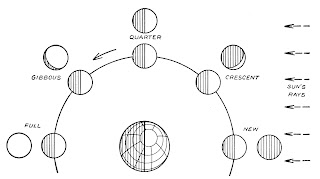Sunday, December 30, 2007
Lullaby for Grown-Ups - Auld Lang Syne
It's time again to revisit what is certainly one of the most sentimental holiday songs, second only to Silent Night, I think. Despite the sentimentality, I think this is a very nice version to help us mark New Year's Eve and the start of 2008.
And here is my new year's wish for you - may you receive everything you need and most of what you want in the coming year!
Sunday, December 23, 2007
Lullaby for Grown-Ups - Bonnie Raitt
Wherever you're going this holiday week, whatever gifts are exchanged, and however you've come to define "home," I hope you enjoy this beautiful song by Bonnie Raitt.
Wednesday, December 19, 2007
Diversions for Insomniacs #2
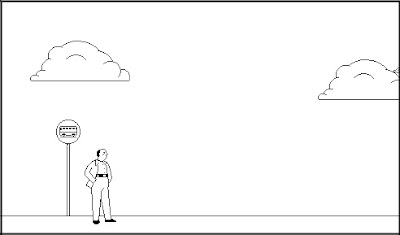
Here's a fun little game that should provide at least a few minutes of diversion. Fly Guy reminds me of flying dreams I've had, especially the ones where I'm not that high off the ground, but am moving forward without walking. Flying is so much easier - it's like it doesn't take any energy at all. I'm just gliding along. Smooth!
As for Fly Guy, be aware that because the ending is slightly risque, it may not be completely suitable for the office. Enjoy your fly time!
Sunday, December 16, 2007
Lullaby for Grown-Ups - The Freed Unit
This week we have a seasonal video - the song Winter Solstice (the Snowman Came Inside) by a UK band called the Freed Unit. A little strange but mostly charming, it tells the story of a snowman who comes into the house for a drink of sloe gin. (Spoiler - it doesn't end well for him.) My favorite part is Jack Frost's dance.
Thursday, December 13, 2007
The Darkest Evening of the Year

© Photographer:Javarman Agency: Dreamstime.com
Anthropologists think that prehistoric humans observed rituals related to the winter solstice out of fear that the sun would gradually go away completely, leaving them in eternal cold and darkness. Only human intervention could prevent this catastrophe. The fear of abandonment by the sun, the life-giving force, seems so primitive to us, yet gives a glimpse at how precarious life must have been at that time.
Even now, some people struggle with the darkness this time of year. One of the saving graces of January in northern climates is that at least the days are getting longer.
While I wrote earlier that I wouldn't post a lot of poetry here, I did find a video of Robert Frost's Stopping by Woods on a Snowy Evening, with its reference to the solstice. If you're inclined, you can watch it by following this link. I like this video not just for the recitation, but for the music and imagery as well. This poem remains an American classic, with the narrator torn between contemplating the beauty of the woods and the duties he must tend to. Think of him as you run your after-work errands in the dark in this run-up to the holidays.
Sunday, December 9, 2007
Lullaby for Grown-Ups - John Mayer
Since we're on the subject of insomnia, I thought I'd post this video, based on John Mayer's song Quiet. The video's creator, Michael Dyck, writes that he wanted to make "the video I saw in my mind every time I heard this song." I think he did a masterful job capturing the frustration and resignation of a sleepless night.
Maybe this video will act as a kind of inoculant and that by watching it, we'll all sleep soundly tonight. (Here's hoping...)
Wednesday, December 5, 2007
Insomnia is My Baby
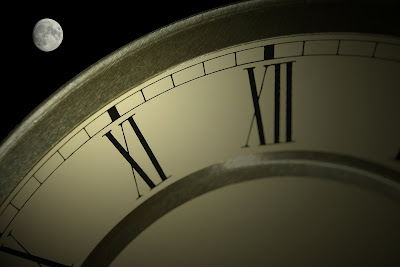
How do people go to sleep? I'm afraid I've lost the knack.
- Dorothy Parker
Does this sound familiar? After having fallen asleep easily at bedtime, I open my eyes at 3 a.m. ("the soul's midnight") and can only hope to fall back asleep within a few minutes. Otherwise, I'm up for an hour or two, thinking too hard about things, then realizing that if I just stopped thinking, maybe I'd get back to sleep.
Or you may have the same issue as Dorothy Parker - trouble getting to sleep in the first place, lying awake 'til midnight or later, counting how many hours you have until the alarm clock goes off ("If I fall asleep now, I can still get five good hours"). Either way, insomnia is a pitiless companion. What we need the most eludes us, providing a cruel metaphor that only the most ardent pessimist extends into waking life.
There are ways to deal with recurring insomnia. Some people have home remedies they rely on (hot milk, chamomile tea, a boring book). Others use over-the-counter or prescription help. And some people make the best of it by jotting down their night thoughts in a bedside journal or even using the time to take care of bill paying or other low-key household tasks.
If you have a tendency to go online during your night wanderings, you can, of course, come here and watch some of the Lullabies for Grown-Ups to soothe you back to sleep. But for those who might be looking for something more interactive, I'm starting a new feature, Diversions for Insomniacs. The diversions will include games and other fun activities to keep you occupied until you feel ready to try that sleep thing again. I'll feature the diversions about once a month and I hope you find them fun and helpful.
The first one relates to the title of this post. That's the start of a story by the writer Roger Angell called Ainmosni, in which the main character is advised by a friend to write palindromes as a way to cure his insomnia. Palindromes are words, phrases, sentences or even paragraphs that read the same forward as backward. The usual examples include the name Otto and the sentence, Madam, I'm Adam. It can be fun to find words that can be reversed (like devil and lived). But actually writing a palindrome takes a love of word play and a great deal of perserverance. Often, the completed work makes no sense, because, as Angell notes, it's the only literary form "in which the story line is controlled by the words rather than the author."
In the case of Angell's story, the narrator becomes obsessed. It's a danger - I've written a few palindromes myself and it can be hard to stop. But if you'd like to try it, follow this link for some useful tips. I also recommend the use of a rhyming dictionary, which arranges words by the sound of their final syllable. This can help you find the right words to link threads of a paragraph together.
Give it a try and stay tuned for more Diversions for Insomniacs!
Sunday, December 2, 2007
Lullaby for Grown-Ups - Canadian Brass
This week's lullaby is a beautiful video from the Canadian Brass. I love the warm, rich tones of a brass ensemble. The composition is Quintet by Michael Kamen.
Friday, November 30, 2007
Dancing Celestial Lights

© Photographer:Roman Krochuk | Agency: Dreamstime.com
The second time I saw the aurora was when I lived in the Twin Cities. Even though I was in the brightly lit suburbs, I was able to watch the faint green lights from my balcony. It was a mostly clear night with just a few wispy clouds passing by. But I really couldn't see the lights unless there was a cloud there to act as a reflector. Not a spectacular display, but had I been away from city lights, it would have been.
The northern lights have fascinated and troubled people for centuries. Often the lights were considered omens of coming wars or famines. Elsewhere, they were thought to be the souls of ancestors or dead warriors. But my favorite explanation is that the lights were the reflection of a great treasure: either huge swarms of herring (a belief from Scandanavia) or the ultimate motherlode of gold (believed by prospectors during the Klondike gold rush).
In fact, the aurora originates with the sun and its solar winds, which impinge on the Earth's atmosphere. The beauty of this arrangement is that scientists now can predict, fairly accurately, when the aurora will occur. Check out the link to spaceweather.com. You can sign up for alerts so you don't miss the next great aurora display.
And from NASA, we have this extraordinary image:

It's the aurora borealis from space, taken by the crew of the shuttle Atlantis during a mission this past summer. Somehow it's comforting to know that the northern lights are just as beautiful and ethereal from above as from below.
Sunday, November 25, 2007
Lullaby for Grown-Ups - Jacob Miller
The lullaby this week is a song by Jacob Miller (not the deceased reggae singer, another Jacob Miller) called Who We Are. The video is from the BBC documentary Planet Earth and features some stunning nature images. I hope you enjoy this addition to the growing collection of Lullabies for Grown-Ups.
Tuesday, November 20, 2007
What the Evening Reveals
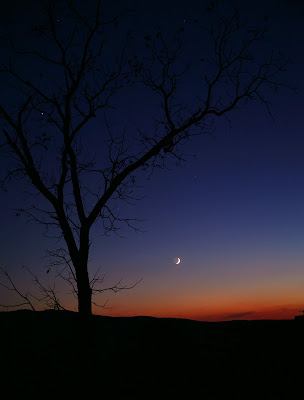
© Photographer:Mark Ross | Agency: Dreamstime.com
Evening
The sky puts on the darkening blue coat
held for it by a row of ancient trees;
you watch: and the lands grow distant in your sight,
one journeying to heaven, one that falls;
and leave you, not at home in either one,
not quite so still and dark as the darkened houses,
not calling to eternity with the passion
of what becomes a star each night, and rises;
and leave you (inexpressibly to unravel)
your life, with its immensity and fear,
so that, now bounded, now immeasurable,
it is alternately stone in you and star.
Sunday, November 18, 2007
Lullaby for Grown-Ups - Hem
This week's lullaby is the song Red Wing by the group Hem. They have a bit of a country feel to them. I think this song is so pretty and I love the lyrics. Settle back and enjoy this great song as we head into the holiday week.
Friday, November 16, 2007
Birds Fly to the Stars, I Guess
Well, I had hoped to go out and try to find Comet Holmes so I could give you a report. This comet surprised everyone recently by suddenly becoming very bright, bright enough to be seen with the unaided eye. No one knows why this happened, so it's very mysterious.
But my timing is bad, because we have partly or mostly cloudy skies forecast for about the next week. That's November in Wisconsin. Instead, I put up a link in the links section to spaceweather.com. This is a great site that offers information on auroras, meteor showers, eclipses and other interesting astronomical events. They have a sky map that shows where to look for the comet, so you can go find it for yourself if the skies will cooperate. Good luck!
Besides clouds, I've got Canada geese in the sky over my neighborhood. They're hanging out until the ponds and lakes freeze over and they head south. Sometimes they fly at night, moving from one field to another. I hear their honking as they fly overhead.
Many song birds migrate at night, using the cover of dark to avoid predators. I remember when I first learned that fact about the natural world. It made the night seem more interesting. I had just assumed that most birds slept at night, except the noctural ones like owls. I wondered what other phenomena the night was concealing that had escaped my notice.
Of course, some birds are famous for singing at night, like nightingales. That can be either charming if you're out for a night walk or annoying if you're trying to sleep. Someone I know once threw a pot of water at a nightingale that wouldn't shut up. The bird did not appreciate it. It flew out of the tree, found a nearby tree and resumed singing.
Bird activity at night made me think of the Beatles song Blackbird, so enjoy the video. And as for the title of this post, do you remember where it's from? The movie Moonstruck, with Cher and Nicholas Cage, which is a great movie beyond that fact that it's in keeping with the night theme. "Bring me the big knife!" "It's Cosmo's moon!" Time to update the Netflix queue...
Sunday, November 11, 2007
Lullaby for Grown-Ups - LED Throwies
What is an LED throwie? It's simply an LED light, battery and magnet. They'll stick to any surface that has a sufficient amount of iron, such as the building facade in this video. Young people like to use these inexpensive lights to brighten up their neighborhoods, creating their own artistic statements with light.
Technically, LED throwies are considered a form of graffiti. But I have to say, if someone put these up in my neighborhood, I'd be all right with that. I might even help pick them off after they burned out.
Relax and enjoy this video. The song is Heartbeats, performed by Jose Gonzalez.
Wednesday, November 7, 2007
Good Night, Moon
 I don't want us to suffer from moon fatigue, so I'll be moving on to other topics. But don't worry, we'll revisit the moon from time to time.
I don't want us to suffer from moon fatigue, so I'll be moving on to other topics. But don't worry, we'll revisit the moon from time to time.Before we go, though, one more thing: this very easy synopsis of how you can tell when the moon will rise: The new moon always rises at sunrise, the first quarter moon rises at noon, the full moon rises at sunset and the last quarter moon at midnight. I've always been confused by this, because sometimes you see the moon during the day and sometimes you don't. This is the kind of information you might come across in old novels, when someone has to make an escape at night and waits for the moon to set so it's completely dark. See how handy this stuff is?
Sunday, November 4, 2007
Lullaby for Grown-Ups - Starlight Plateau
This week's lullaby is a meditative song featuring a Native American flute melody. I love the sound of Native American flute - so rich and vibrant. I find it very relaxing to listen to. This song was written and performed by Jim Cook, who played both the flute and keyboards.
Friday, November 2, 2007
The Rabbit in the Moon
Here is an animated version of the traditional Asian tale that explains how the rabbit ended up on the moon. I like this story, as it honors kindness while recognizing its limits. I hope you enjoy this wonderful story.
The Many Inhabitants of the Moon

Everyone knows about the man in the moon, a mysterious figure who nevertheless, according to tradition, enjoys a glass or two of red wine. But people in other cultures see different figures in the moon, including a woman, a rabbit, a moose, a buffalo and a dragon (although probably not all at once). It's an example of pareidolia - finding order or structure in random images or sounds. Another example is looking for animals or faces in clouds.
There is a theory that the traditional figures people see in the moon (a man in Europe and a rabbit in Asia) may be related to the latitude of their location, since the moon appears somewhat differently in different latitudes. To explore this idea, follow this link for more information.
Take some time to look at the moon image above and see what other moon inhabitants you can imagine. If I squint right, I can almost see the buffalo...
Monday, October 29, 2007
Halloween Thoughts, and a Real Ghost Story
What is it about the night that enchants children? So many children's books show their characters going out into the night for a great adventure (and almost always leaving their parents behind).
The great fun of Halloween isn't just the candy. It's a chance for children to roam their neighborhoods in the dark, to confirm their suspicions that things really are different at night. That's when the imagination can take over, filling in the gaps left by the absent light.
The origins of Halloween go back to the Celts, who celebrated Samhain, a harvest festival, in the late autumn. They believed it was a night when the boundary between the physical and spiritual worlds became very thin. This allowed spirits into the world to cause problems for humans. To confuse the spirits, people dressed as ghosts and ghouls, hoping to trick the spirits into moving away from their village.
Ghost stories are still with us, of course. A 2003 poll found that 51% of US adults believe in ghosts. Some people have speculated that ghosts are actually time-space anomalies, or some sort of electromagnetic residue. Others view ghosts as psychological projections of our fears.
In celebration of Halloween, take a look at the above video, which is an actual account of an encounter with a ghost known as the Ada Witch. It takes a while to get to the story, so be patient. For more information on this particular ghost, follow
this link and have a Happy Halloween!
Sunday, October 28, 2007
A Smooky Ghost Story
Let's take a little break from the lullabies, since Halloween is coming up, a wonderful nighttime holiday. Here's a smooky ghost story, written and narrated by 5-year-old Benjamin, who took the opportunity to practice his counting.
I'll post another ghost story in a couple of days -- a real life one. In the meantime, I hope all the ghosts and goblins you encounter are friendly ones!
Thursday, October 25, 2007
The Moon and His Two Wives
For another explanation of the moon's phases, consider this delightful film, based on a tale from the country of Malawi.
The Inconstant Moon
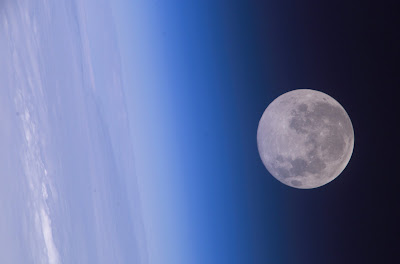
Well, since we're here, let's quickly and painlessly get up to speed on the moon’s phases. Here's a diagram to help:
That's the Earth in the center with the moon circling. The outer moon figures show the phases as seen from the Earth. It's really just about the positioning of the moon with respect to the sun and the Earth. It also relates to the fact that the moon seems as though it doesn't rotate (although it does, once for every revolution around the Earth).
Well, I don't want to get too technical. After all, it's getting late. The image above of the moon and the Earth's atmosphere is courtesy of NASA, taken from the International Space Station. The NASA images are amazing, and we're just getting started!
As for Romeo and Juliet, maybe if he'd sworn by the moon, things would have turned out differently. We'll never know. The moon may seem inconstant, but it is reliable in its cycle, waxing and waning as it has for millenia. It takes human minds to apply moral judgments to natural phenomena. I'm pretty sure the moon doesn't care.
Sunday, October 21, 2007
Lullaby for Grown-Ups - Nick Drake
In keeping with the moon theme, here's a tribute video featuring Nick Drake's song Pink Moon. You might remember it from a Volkswagen ad a few years ago. I hope you enjoy it.
Wednesday, October 17, 2007
The Light of the Moon
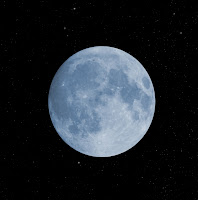
Some years ago, when I lived in another state, I used to go visit friends who lived in the country. One night I was driving home and noticed that the full moon was casting shadows across the snow-covered fields. I had never noticed moon shadows before. The brightness of the moonlight reflecting off the snow was startling, and I became entranced by the shadows of the trees on that silvery landscape.
Moonlight, praised by poets through the ages, is reflected sunlight, only much dimmer. Moonlight has mysterious qualities. Colors are muted. It's hard to read by moonlight, even if it seems bright enough. It turns out that the mystery lies not in the moonlight, but in the workings of our eyes, which have two kinds of light receptors -- rods and cones. Rods operate in dim light, but can't provide color information to the brain. Cones allow us to see colors and fine detail, but need bright light to function.
Before we conclude that science has once again impinged on the territory of the poets, consider Emerson's quote above. I wonder what he means by "necessary journey." Certainly a bright moon would have helped someone traveling at night in the 19th century. We don't need the moon for that today, for the most part. But to make the necessary journey inward, to encounter the hidden places within, takes both fortitude and light -- not the glaring light of the sun, but the soft, pale light of the moon, giving us just enough light to move forward, to venture into the darkness to recover what has been lost. The moon in that nightscape becomes a guide to our deepest emotions, casting its gentle light to reveal both substance and shadow as we make our way through unmapped terrain.
Sunday, October 14, 2007
Lullaby for Grown-Ups - Zero 7
I decided to post the lullabies on Sundays to help combat what's been called Sunday Night insomnia, where people can't get to sleep because they're stressed about the coming work week. So relax and enjoy this gorgeous video by Zero 7 of their song, Home.
Friday, October 12, 2007
The Night Sky

We'll be exploring the night sky over the course of time, beginning with the moon, then moving outward to the planets and on to deep space. The image above is of spiral galaxy NGC 4414 and was taken by the Hubble telescope. This NASA image is in the public domain. If you want to see more breathtaking astronomy images, go to the links section to NASA's Astronomy Picture of the Day, where you can see how humanity's vision with respect to the stars has come into sharp focus thanks to extraordinary technology.
Wednesday, October 10, 2007
Night Lights


Here's one more, not quite so high tech, from brownsmark.com:

Maybe that's all we need sometimes -- just enough light to keep the darkness at bay.
Tuesday, October 9, 2007
Lullaby for Grown-Ups
This will be a regular feature here. I'll vary the musical style over time to appeal to a variety of people. For now, enjoy this lovely rendition of Debussy's Beau Soir.
An Introduction to the Night
To begin, I'd like to recommend a book: Acquainted with the Night: Excursions Through the World After Dark, by Christopher Dewdney. This fascinating book moves from dusk to dawn, discussing natural and astronomical topics, such as the difference between civil and nautical twilight and the behavior of nocturnal animals, to cultural aspects of the night, including night life, bedtime stories, sleep behavior and dreams/nightmares.
Dewdney provides us with a jumping off point. We have a lot of ground to cover. I hope you enjoy this blog. My goal is to create a peaceful spot in the blogosphere, even as we plumb the depths of ourselves and the night. This is the place to come when insomnia hits, to hear a lullaby for grown-ups or see how the night has influenced art, music and literature. Welcome, and thanks for stopping by.
